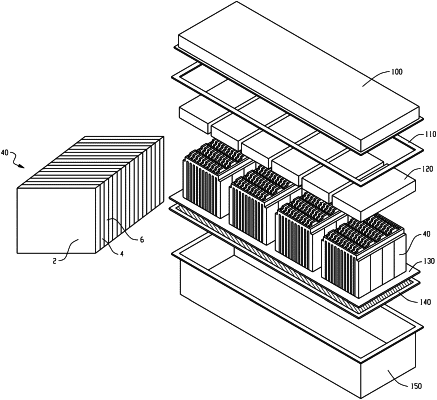| CPC H01M 10/0525 (2013.01) [H01M 10/658 (2015.04); H01M 10/659 (2015.04); H01M 50/209 (2021.01); H01M 50/24 (2021.01); H01M 50/293 (2021.01); H01M 50/489 (2021.01)] | 20 Claims |

|
1. An intumescent battery pad for a lithium ion battery, comprising:
a polyurethane foam having a compression force deflection of 5 to 1,035 kilopascal at 25% deflection determined in accordance with ASTM D3574-17; and
an intumescent material comprising an acid source, a carbon source, and a blowing agent;
wherein the intumescent battery pad has a UL-V0 rating at a thickness of 1 millimeter, and
wherein the intumescent material is present as a coating layer having a thickness of 25 to 250 micrometers on at least an exterior surface of the foam.
|
|
11. A method of making the intumescent battery pad of claim 1, comprising:
coating a frothed composition comprising a reactive mixture onto a release liner;
curing the reactive mixture to form the polyurethane foam; and
wherein the frothed composition comprises the intumescent material, or wherein the method further comprises depositing the intumescent material on at least one surface of the polyurethane foam to form the intumescent battery pad.
|